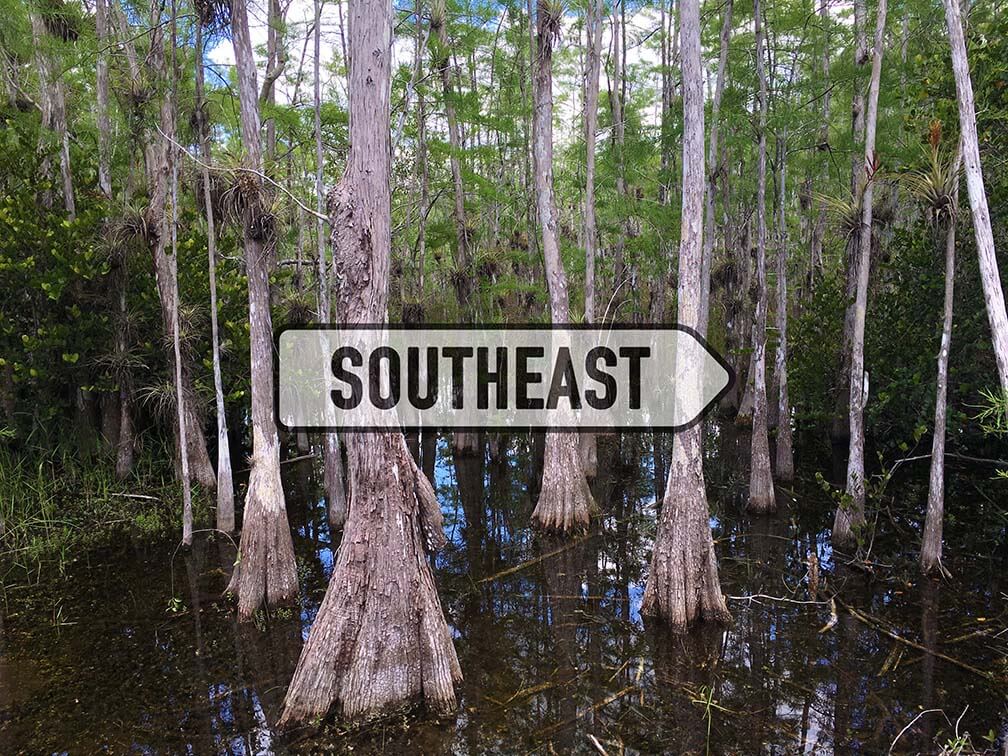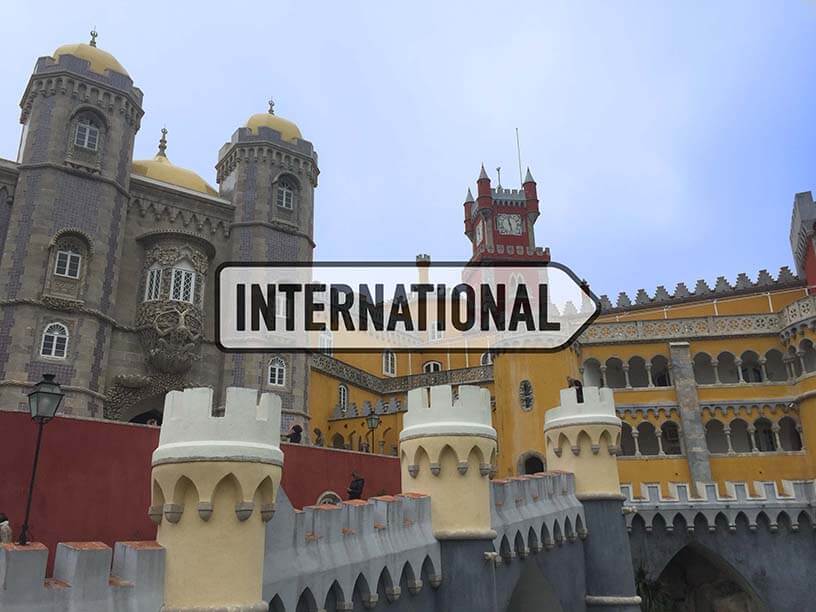Far West:
Alaska, California, Hawaii, Guam, Nevada, Oregon, and Washington
For our first installment focusing on National Park Service units in Hawaii, we’ll be exploring the islands of O’ahu, Maui, and Moloka’i.
Spotlights, Parks and Points
Before its association with cutting edge technological innovation, the Santa Clara Valley was known as the “Valley of Heart’s Delight,” due to its abundance of wheat and produce, particularly pears, apricots, French plums (prunes), tomatoes, flowers, and grapes. The region is both agriculturally robust and scenic, home to a wealth of state parks that protect ancient old growth redwoods, and municipal parks with steep, rocky chaparral and riparian corridors. San Jose is an hour from Pinnacles National Park and Monterey, and 45 minutes from the Santa Cruz Mountains. The Don Edwards San Francisco Bay Wildlife Refuge, where millions of migrating birds pass through annually along the Pacific Flyway, is one half hour north. East San Jose overlooks the foothills of the Diablo Range and is home to the first municipal park in the state of California, Alum Rock Park. At Big Basin State Park, find the largest continuous stand of ancient coastal redwoods south of San Francisco.
Spotlights, Amy Beth Wright
Channel Islands National Park, comprised of five islands along the southern California coast, is only accessible by boat (a sixty-minute journey from the Ventura marina) or by helicopter. In 2015, the park logged 324,816 recreation visits, compared with more than four million visits each to parks like Yellowstone, Rocky Mountain, and Yosemite National Parks. Like the Galapagos Islands, the seclusion and protection in the Channel Islands allows for species that exist in no other part of the world to thrive and become interdependent. Magnificent kelp forests shelter more than 1,000 species of animals and plants. Rocky reefs are prolific for eelgrass beds, and shelter small invertebrates, fish, and sharks. The park provides nesting and breeding grounds for 99% of California’s shorebirds and seabirds, and half of the world's population of ashy storm petrels and western gulls.
Spotlights, Parks & Points
The Salton Sea, near the Coachella Valley, is California's largest lake—though it is shrinking in size due to runoff and evaporation. Pick up some great tips for visiting this unusual and diverse place.
Spotlights, Parks & Points
“In the California town where I grew up, there’s an area designated as the Claremont Hills Wilderness Park. It climbs from 1,800 feet of elevation to nearly 3,000 feet, and it’s decidedly front-country, with a main trail that resembles a broad logging road snaking up the hillside, and scads of people ignoring trail etiquette all along its five-mile stretch. It opened the year I decamped for the east coast. When I returned for the holidays after just a few months away, I was surprised to see that my parents had become “outdoor people,” after a fashion; they walked the steep incline and the five-mile loop with their friends. On these walks, my mom protected her milky Taiwanese complexion from the southern California sun with a succession of big hats and long sleeves.”
2017 Fall Essay Contest, 2nd Place
Essays, Yi Shun Lai
North Cascades National Park is a short two-hour drive from Seattle, and provides a getaway from the everyday into an absorbing and magical world of water, peaks, valleys, glaciers and beauty. The park is split into two units, north and south with the north being the more accessible of the two.
Spotlights, Parks & Points
“We planned to spend a few days camping in Yosemite; I had never actually camped before. After a long car ride up a winding mountain, we set our tents at Bear Lake. In the thick wilderness of the campgrounds, I felt nervous and clueless. We took a long walk away from our parents to fetch firewood. After returning, we decided to explore without a particular objective. As we walked further and further down the dirt road, I felt a mixture of anxiety and independence. My mother was protective, and this was one of the first times I just went with the flow and ignored the wrenching feeling of uncertainty in my gut.”
Essays, Steven Lomangino
Driving from Denver to Los Angeles with my first husband and baby son in 1973, I wanted to enjoy parts of the country I'd never experienced. Tiredness interfered with that often, sending me into uneasy dozes as Richard drove and Lyle sang with the radio, banging out time on his carseat. And so, only one sight has really stayed with me for all these years: Zion National Park in Utah.
Essays, Laura L Mays Hoopes
“I heard Joshua Tree National Park—under three hours by car from where I live in Los Angeles—was one of the most celebrated locations for climbing. I booked a weekend excursion with the Joshua Tree Rock Climbing School and grabbed my friend Jen. We cranked up every classic breakup song in our music collections during the drive out, from Gloria Gaynor's anthem “I Will Survive” and Fleetwood Mac’s “Go Your Own Way” to Alanis Morissette’s “You Oughta Know.” Modest Mouse’s strangely soothing “Float On,” which came out on Valentine’s Day that year, was also on a loop.”
Essays, Melissa Grego
“The Main Park Road through the western side of Lassen Volcanic National Park twists and rises through 3,500 feet, with breathtaking vistas on all sides. I white-knuckled it behind a steering wheel on my first morning there.”
Essays, Laura Power
1. July [1981] Mount Rainier. First viewed through the cross-hatch of my mother’s camera lens. During a visit to Seattle we’d driven 54 miles southeast to the national park. My parents posed in the visitor’s center parking lot; I took my first 35-millimeter shot. How little I knew. That at age 24 I’d move to Seattle with Matt, my future husband, and make a friend named Beth. That 14 years later Beth would die and her family would scatter her ashes a mile above the spot where I clicked my mother’s shutter. Back then, I didn’t understand the role Rainer plays in Seattleites’ lives. The backdrop to our city, it dangles from an invisible chain, a locket containing shards of memories, hopes, failures. Many days, clouds obscure our view of “The Mountain.” In its visible moments, our gazes linger. I watch from my deck as the setting sun pinkens the glaciers, the summit’s tip transforms into a watercolor, then fades until it’s indistinguishable from the night sky.
2016 Fall Essay Contest, 3rd Place
Essays, Janet Buttenweiser
Our expectations for Pinnacles National Park were not high. While my husband and I always talked about stopping to explore whenever we trekked down US 101, it always seemed like a little too much bother for the potential reward. Pinnacles is known for its rocks, birds and heat — the latter frequently overwhelming the attractions of the former. While spotting one of Pinnacles' twenty or so California condors is a crapshoot — the birds are just as likely to be out of the park as in it — the heat is pretty much a guarantee nine months of the year.
Spotlights, Margaret Young
“Behind the gangly girl looms the Grand Tetons, iconic alpine silhouettes against a cerulean Rocky Mountain sky. The Grand Tetons are what a national park is supposed to look like. For a Jersey girl, this vista is like nothing she’s ever seen before, and although she doesn’t know it, her life is about to change.”
Essays, Lauren Danner
“In the embrace of trees so tall I can barely make out the sky, we are at a campsite at Fort Townsend State Park, just a few hours from our home in Seattle. My feet are perched along the edge of the fire ring and my charred marshmallow threatens to dip into the fire. I’m doing it right, I think. Camping. Being outdoorsy. A lacquered coating covers my skin, equal parts bug spray and sunblock. I smell like fir, fire, and vaguely of coconuts.”
Essays, Jennifer Fliss
“As I stood for the first time in Denali National Park, my experience was like stepping out of a time-capsule. The conveyance that had dropped me off in this other-worldly location was a metal-seated green and yellow shuttle bus packed with sun-visored tourists. Now the whole kit and kaboodle was rumbling away down a ribbon of road that curved out of sight into terrain so truly wild that I felt, standing in the midst of it, both exhilarated and very small. The vastness of this wilderness, particularly its autonomy, seemed to me perhaps comprehensible only by the golden eagle that soared on currents far above my head. Into the distance stretched an infinity of tundra peppered with scrawny-limbed trees, the thread of a meandering river at its heart. Beyond undulations of starkly striated foothills, rose a chain of snow-covered mountains, the colossus, Mount Denali, at their center.”
Essays, Cecilia Worth
“We visited Pearl Harbor in 2013, and were deeply moved and sobered by the memorial, more finely understanding the fear and devastation that the surprise attacks wrought. The collected, recorded stories of soldiers and civilians helped us imagine the feelings of being foisted to the front line of a new war, hours if not days away from immediate assistance.”
Essays, Parks & Points
“We knew we wanted to be with family out in nature. That is where we've always had our best times together, whether it has been to hike, ski, sail, scuba, kayak or camp. We prioritize getting exercise each day, but our 73 and 75 year old bodies have the usual wear and tear and little surprising challenges — like cramps or maybe a sudden shoulder pain. So we decided we would rehearse for the trip, plan carefully — remember past camping disasters — and be smarter this time.”
Essays, Jean Jackman



























“Like the redwoods, spaces that are designated for women have been dwindling. Some rot from the inside. Some simply age out of existence. But new saplings, spaces, and ideas are always being planted.” Lia Seth writes about why outdoor spaces for adult women, like The Compact, are vital.
Essays, Lia Seth